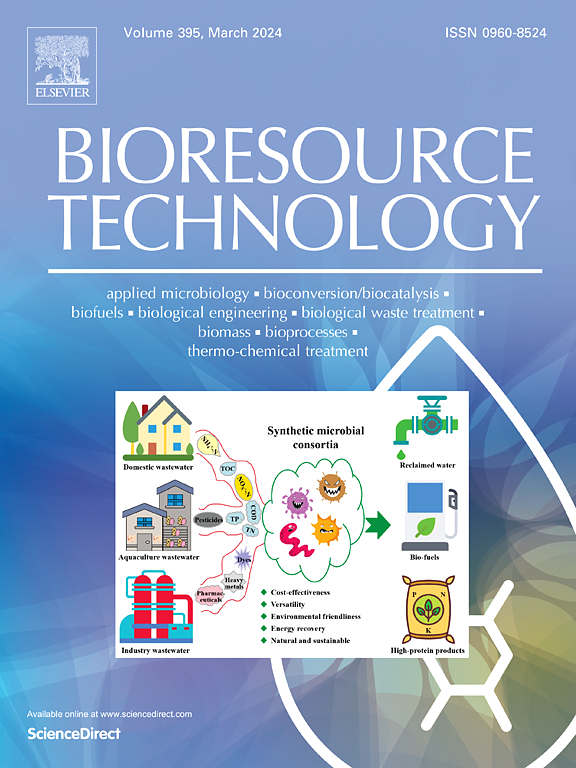Harnessing the potential of Cupriavidus necator for CO2 capture from alcoholic fermentation and its bioconversion into poly(3-hydroxybutyrate)
IF 9
1区 环境科学与生态学
Q1 AGRICULTURAL ENGINEERING
引用次数: 0
Abstract
The fermentation process in alcoholic beverage production converts sugars into ethanol and CO2, releasing significant amounts of greenhouse gases. Here, Cupriavidus necator DSM 545 was grown autotrophically using gas derived from alcoholic fermentation, using a fed-batch bottle system. Nutrient starvation was applied to induce intracellular accumulation of poly(3-hydroxybutyrate) (PHB), a bioplastic polymer, for bioconversion of CO2-rich waste gas into PHB. Grape marc, another by-product of wine production, was evaluated as a low-cost carbon source for the heterotrophic growth of C. necator, which was subsequently used as an inoculum for autotrophic cultures. The effect of agitation, CO2 headspace composition, and nitrogen concentration was tested, obtaining a maximum PHB concentration of 0.69 g/L, with an average CO2 uptake rate of 1.14 ± 0.41 mmol CO2 L-1h−1 and 65 % efficiency of CO2 consumption. These findings lay the groundwork for developing carbon mitigation strategies in alcoholic fermentation processes coupled with sustainable biopolymer production.

利用赤铜藻在酒精发酵过程中捕获二氧化碳及其生物转化为聚3-羟基丁酸酯的潜力。
酒精饮料生产中的发酵过程将糖转化为乙醇和二氧化碳,释放出大量的温室气体。在这里,利用酒精发酵产生的气体,采用补料分批瓶系统,对赤铜(Cupriavidus necator DSM 545)进行自养生长。利用营养饥饿诱导细胞内聚积聚(3-羟基丁酸酯)(PHB),一种生物塑料聚合物,将富含二氧化碳的废气转化为PHB。葡萄酒生产的另一副产物葡萄马克被评价为C. necator异养生长的低成本碳源,随后被用作自养培养的接种物。考察了搅拌、CO2顶空组成和氮浓度的影响,得到PHB的最大浓度为0.69 g/L,平均CO2吸收率为1.14 ± 0.41 mmol CO2 L-1h-1, CO2消耗效率为65 %。这些发现为在酒精发酵过程中制定碳减排策略以及可持续的生物聚合物生产奠定了基础。
本文章由计算机程序翻译,如有差异,请以英文原文为准。
求助全文
约1分钟内获得全文
求助全文
来源期刊

Bioresource Technology
工程技术-能源与燃料
CiteScore
20.80
自引率
19.30%
发文量
2013
审稿时长
12 days
期刊介绍:
Bioresource Technology publishes original articles, review articles, case studies, and short communications covering the fundamentals, applications, and management of bioresource technology. The journal seeks to advance and disseminate knowledge across various areas related to biomass, biological waste treatment, bioenergy, biotransformations, bioresource systems analysis, and associated conversion or production technologies.
Topics include:
• Biofuels: liquid and gaseous biofuels production, modeling and economics
• Bioprocesses and bioproducts: biocatalysis and fermentations
• Biomass and feedstocks utilization: bioconversion of agro-industrial residues
• Environmental protection: biological waste treatment
• Thermochemical conversion of biomass: combustion, pyrolysis, gasification, catalysis.
 求助内容:
求助内容: 应助结果提醒方式:
应助结果提醒方式:


